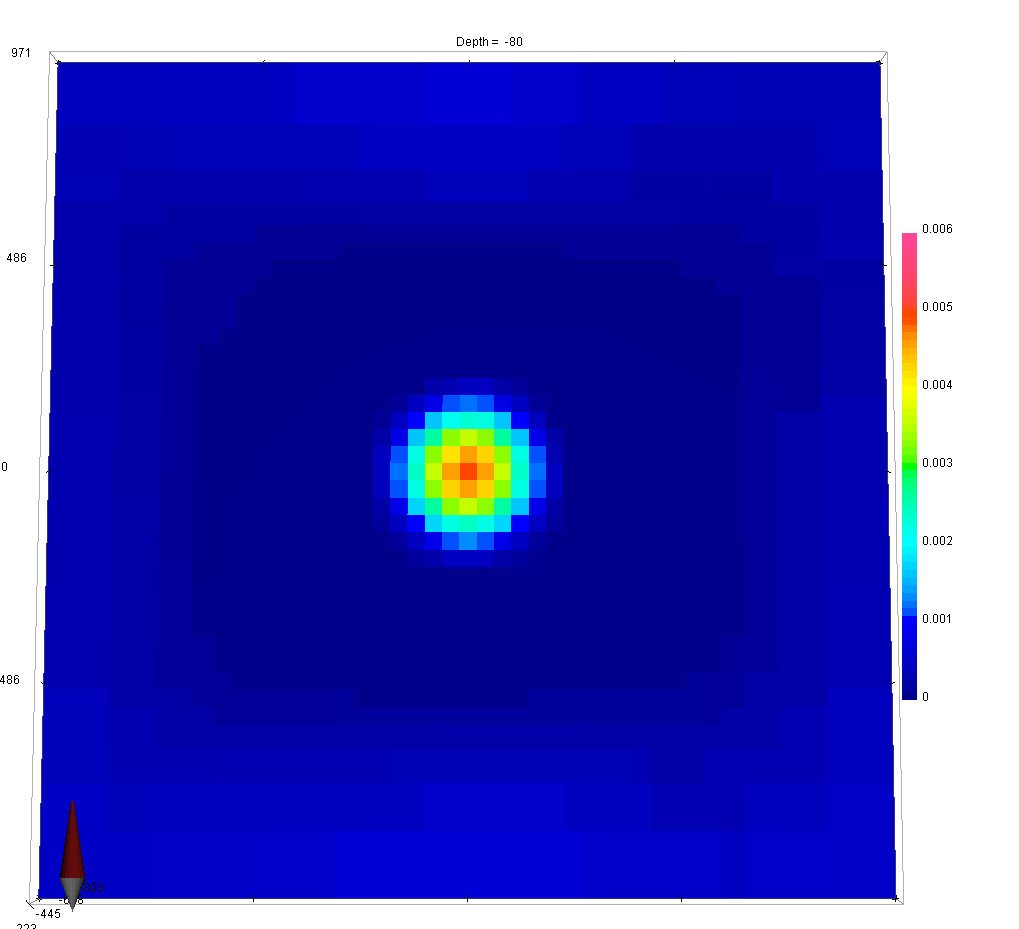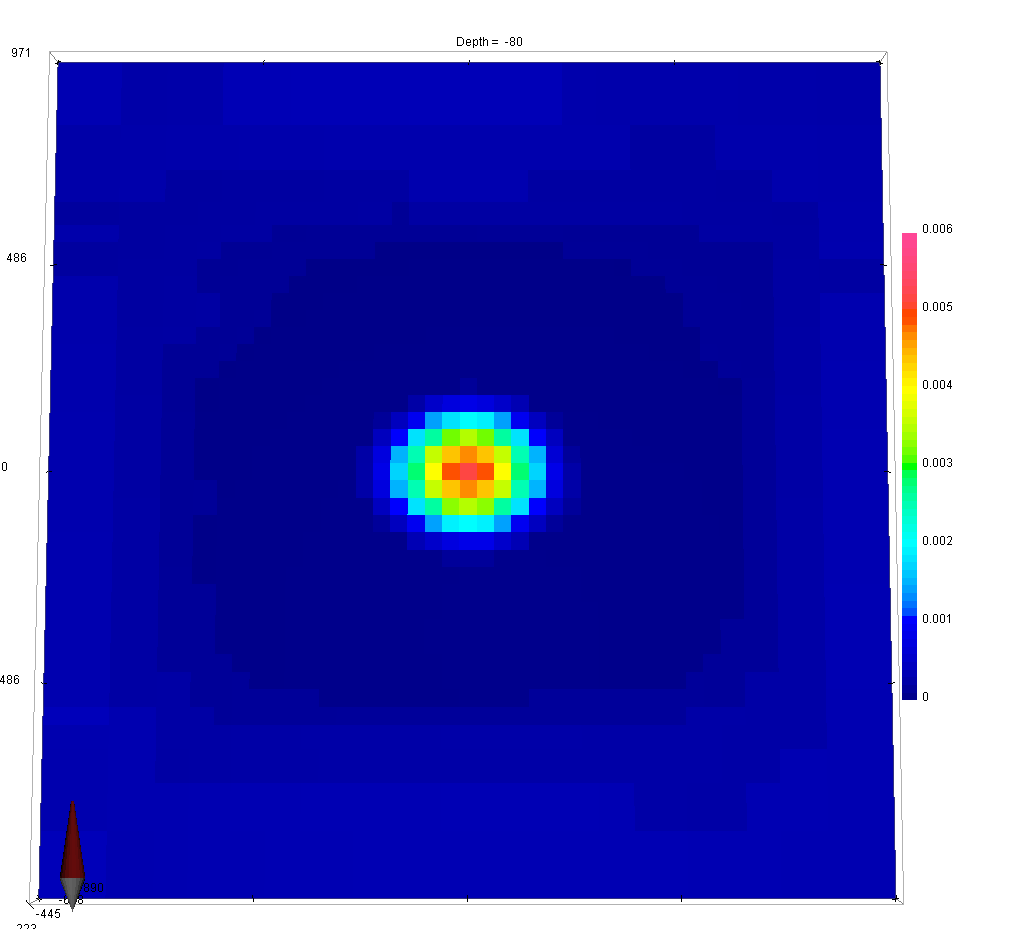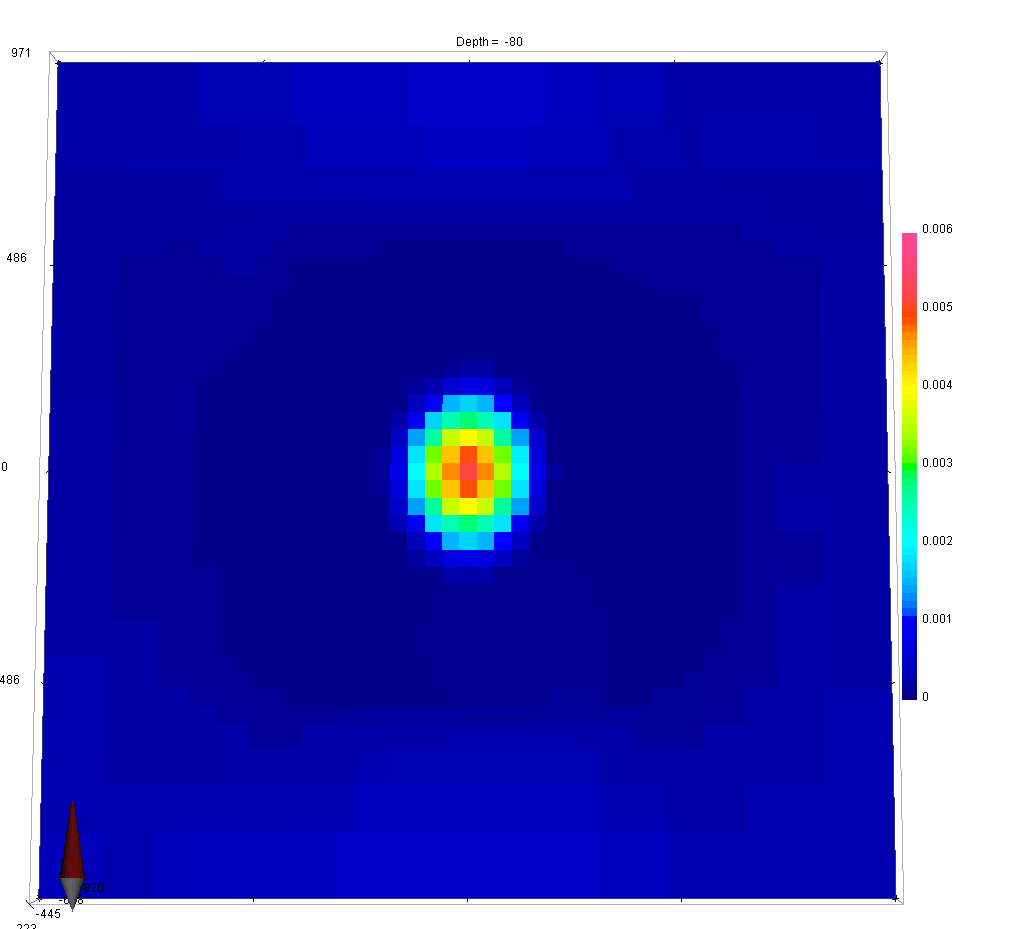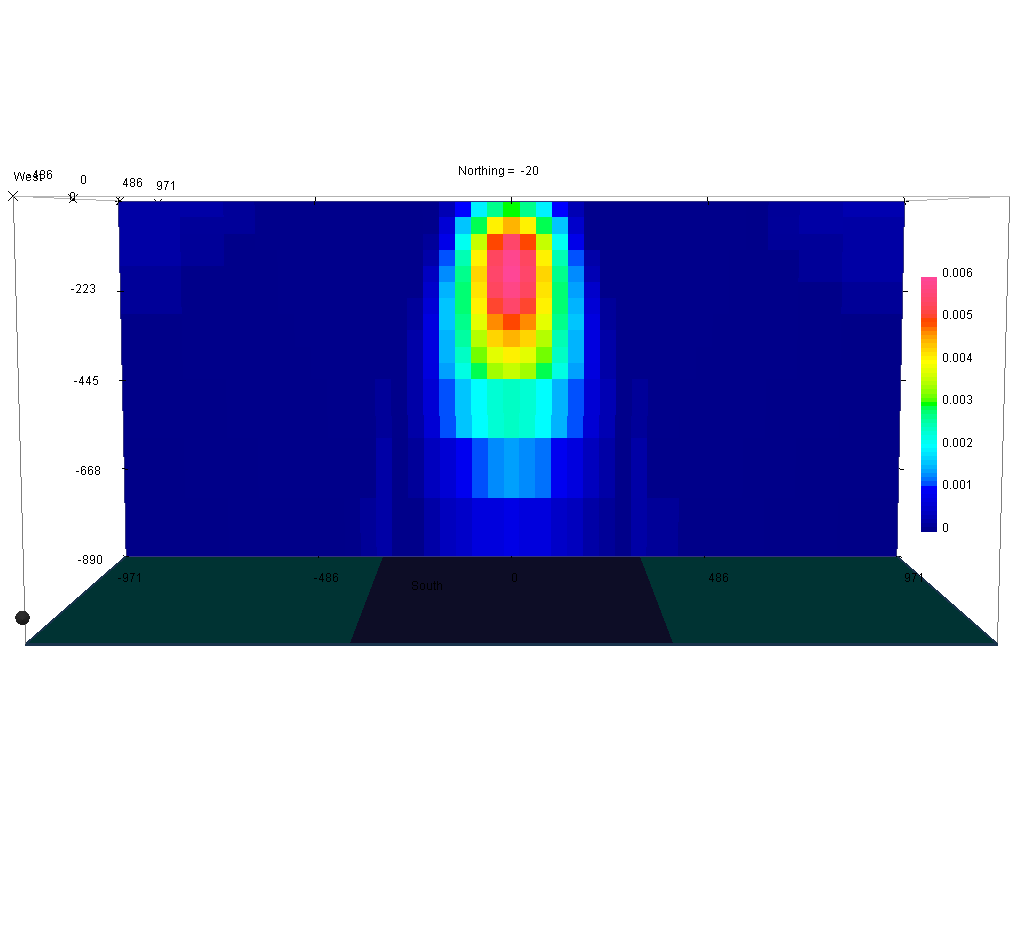6.5. The Alphas Parameters
The model objective function consists of four main components; one that defines how the model can vary from the reference model, and one for each of the allowed gradients in the x, y and z directions. Each of these four components has a coefficient, denoted by α, that controls their relative importance in the regularization \(\phi_m (\mathbf{m})\).
In this example, we demonstrate the effect that each α value has on the solution.
As a general rule of thumb, larger \(\alpha_x\), \(\alpha_y\) and \(\alpha_z\) results in an increased smoothing in the corresponding direction, while reducing \(\alpha_s\) results in an overall smoother model.
Tip
In order to get equal contribution from all four components making up \(\phi_m(\mathbf{m})\), set \(\alpha_s=\frac{1}{h^2}\), where h represent the cell size dimension in the core region. If the mesh cells are not cubic, α values should be adjusted accordingly (smaller h => reduced α)
It is sometimes useful to think of the α values in terms of length scales:
These length scales can be adjusted to reflect a priori information about the general trend expected from the geology.
Important
In most inversion codes, the default α values are: \(\left[ \alpha_s=1e-4, \alpha_x=\alpha_y=\alpha_z=1 \right]\).




